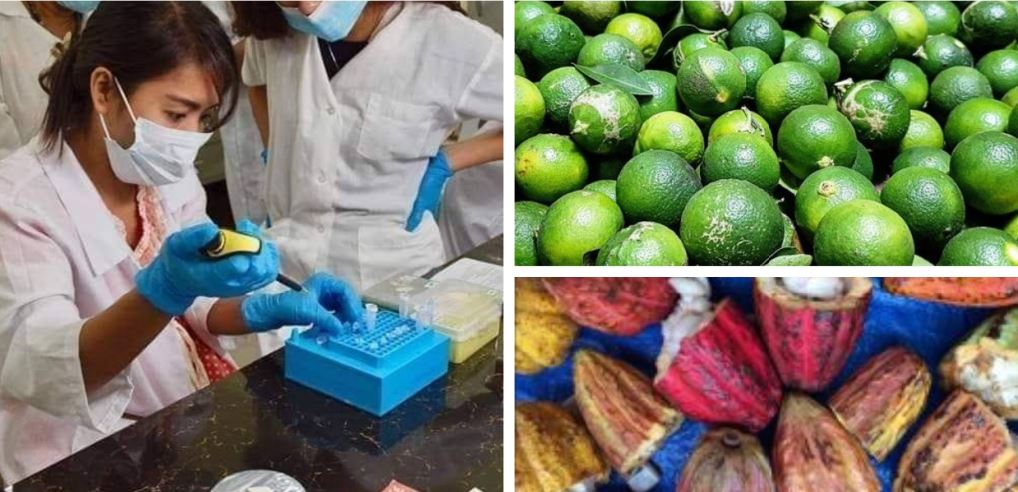
University of the Philippines Visayas alumna and now Western Mindanao State University (WMSU) chemistry instructor Julienne Stephanie F. Agapin is developing calamansi peels and cacao pods into active packaging films that will help preserve food and serve as an alternative to plastics.
Agapin, a UP Visayas graduate with a Master of Science in Chemistry and an undergraduate degree in the same subject, is conducting her study at the WMSU in Pagadian City, her hometown.
The WMSU Pagadian City campus teacher recently received a Department of Science and Technology (DOST) grant worth PHP715,503 to develop studies on the active packaging films that incorporate the active components for food preservation such as antioxidants and antimicrobial agents to the packaging material, rather than a direct application of these components into food. Essential oils, which are known to exhibit both antioxidant and antimicrobial properties, are being added to packaging films in order to convert the films into active packaging.
Agapin’s one-year study is expected to optimize cacao and calamansi mixtures for the production of active packaging films, and to develop active food packaging films from cacao and calamansi loaded with encapsulated lemon grass oil and calamansi oil.
The grant will be utilized to obtain the necessary provisions, supplies and materials, and chemical reagents for the extraction of essential oils and the production of active packaging films.
Julienne Agapin shared with GoodNewsPilipinas.com that she first proposed the study in the hope to get materials for students to use in her chemistry class laboratory in the WMSU Pagadian Campus. “I’m handling chemistry subjects and it is difficult to teach lab-based courses without letting the students see actual items,” the WMSU teacher said.
“It will also resolve the emerging problem on cacao waste disposal… In ZDS alone more or less 300 metric tons of cacao pods are thrown directly to dumpsites,” added Agapin.
The grant was awarded by the Department of Science and Technology – Philippine Council for Health Research and Development (DOST-PCHRD) through the Zamboanga Consortium for Health Research and Development – Regional Research Fund (ZCHRD-RRF).
The DOST, through its various R&D councils, provides funding for studies in designing, implementing, and managing research projects.
Regular staff and faculty members of research institutes, medical and allied health sciences, hospitals, and other health-related agencies are encouraged to submit research proposals to the ZCHRD secretariat via electronic mail at zchrd@ro9.dost.gov.ph or visit https://ift.tt/39O4Xqy.
In De La Salle University Dasmarinas, senior high school students have developed alternatives to plastics using banana peels and rice water.
SEND CHEERS in the comments below to University of the Philippines Visayas alumna and now Western Mindanao State University chemistry instructor Julienne Stephanie F. Agapin for developing calamansi-cacao rinds into an alternative to plastic food packaging.
Good News Pilipinas is celebrating its 15th Anniversary in 2021 by giving away prizes! Subscribe to our Good News Pilipinas! TV YouTube channel and enter the raffle by sending us an email to editor@goodnewspilipinas.com
The post UP alumna develops calamansi-cacao rinds alternative to plastic food packaging appeared first on Good News Pilipinas.
Source: Good News Pilipinas
0 Comments